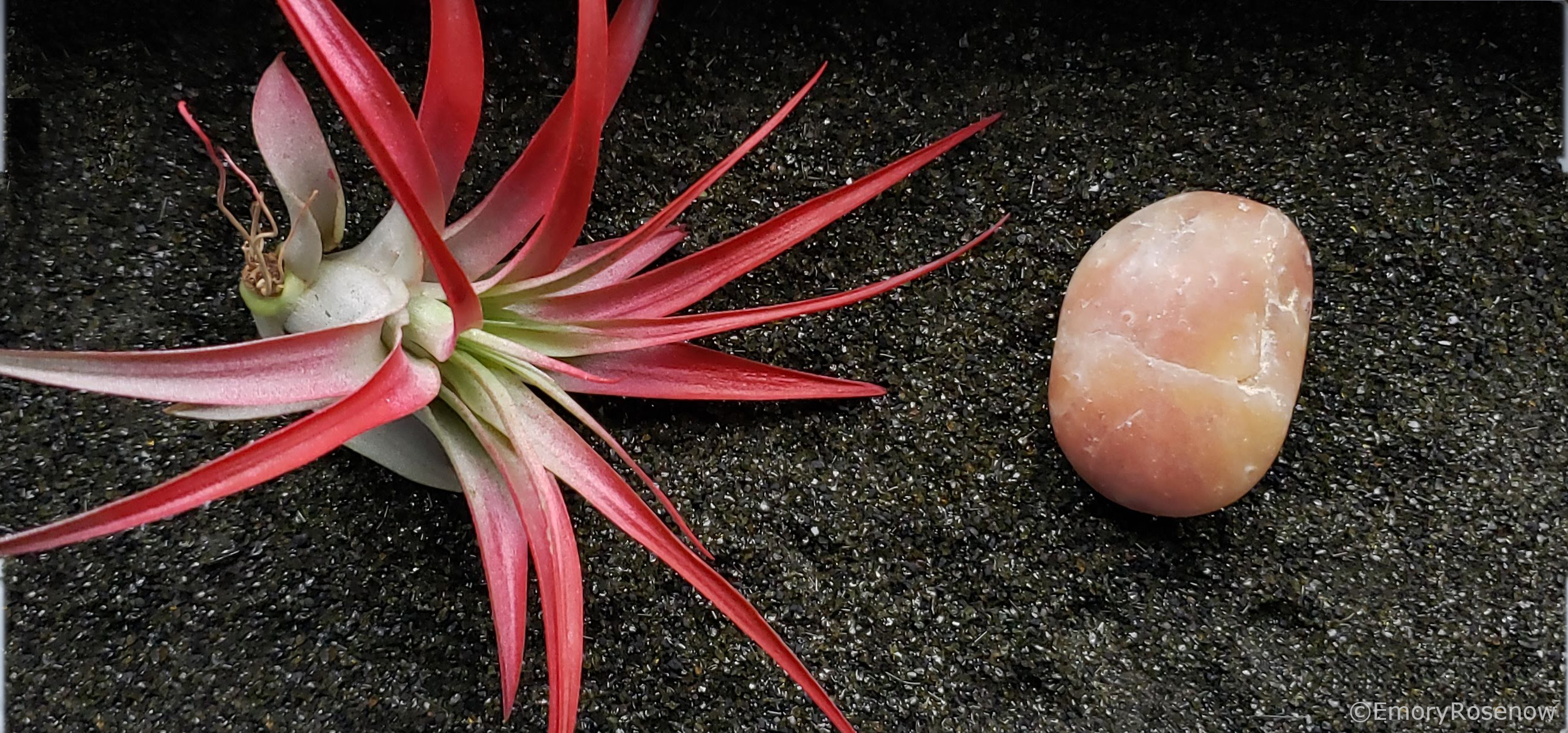Meet Callie, a Calathea “Freddie”! This is a series of plant profiles based on the houseplants in my collection. For each, I’ll take you through some basic plant facts and care information (jump to) based on my research and personal experience!
Science Stuff
From what I can tell, the scientific name for “Freddie” is Calathea concinna, but mostly you’ll just see Calathea “Freddie” on the label. Calatheas are native to tropical regions of the Americas, where they are cultivated for their large and strong leaves. One species is used in Guatemala to wrap tamales, another is used in Brazil to wrap fish. A full grown Calathea can reach up to three feet high, but houseplants can struggle to reach that size.
Calatheas are also sometimes called prayer plants (along with some other close relatives), because their leaves fold up at night. Some varieties fold more than others; in my observation, “Freddie” doesn’t fold up very much, if at all. However, they still have the distinctive joint at the base of the leaf, which you can see below.

Calatheas are non-toxic.
Callie the Calathea “Freddie”
I’ve had Callie for about 9 months now. She was tucked behind some pothos at the nursery, unlabeled and orphaned; so naturally, I bought her. At that time I was just starting to get into houseplants, and it took me some time to figure out what she was! Thankfully, I managed to not kill her before then, because Calatheas can be rather finicky as it turns out.
Calathea “Freddie” is relatively easy to care for, compared with some other Calatheas. They’re still not the easiest houseplant to grow. For instance, they’re susceptible to soil gnats by virtue of their preferred growing conditions, they can attract spider mites in spite of their preferred growing conditions, and getting water levels right can be tricky. However, their beautiful foliage can make it worth it!
Care

- Water: Calatheas like to stay evenly moist, but not wet. They are also sensitive to chemicals commonly found in tap water, so it’s best to water them with distilled or rain water. I personally use filtered water, and that seems to work well enough. Cold water can also shock the plant, so use room temperature for best results.
- Light: As they are native to forest floors, Calatheas do best in general in indirect medium light. “Freddie” was apparently developed to do better in lower light conditions, and my Callie seems fine in very indirect light.
- Temperature: Calatheas are very cold sensitive, as in don’t let them get below 60°F/16°C. They are happiest around 65-80°F/18-27°C.
- Humidity: Higher humidity is better for these divas. This can however make them susceptible to fungi and soil gnats, both of which love the wet, so keep a careful eye out.
- Food: Calatheas are sensitive to synthetic fertilizers, so either dilute or use an organic food of some kind. I haven’t had too many problems with this though.
- Container: The best container depends a bit on your own habits: if you tend to overwater, clay is better, but if you underwater, plastic/glazed is better. Use a soil mix that drains well if you go for a non-porous container, though. A wider pot is better too, especially if you want your Calathea to grow bigger – she needs room to spread out!

My Thoughts:
I only recently repotted Callie from her nursery (plastic) pot into her current pot, which is made out of granite clay. These pots seem to be less porous than traditional terra cotta style, but still do wick moisture out of the soil. And they look great too! So far she seems very happy.





So pretty!! I’m keeping my eye out for one to add to my collection!
YAS! I see a lot of Calathea ornatas in nurseries, but not so many Freddies 🙁 Poor unloved